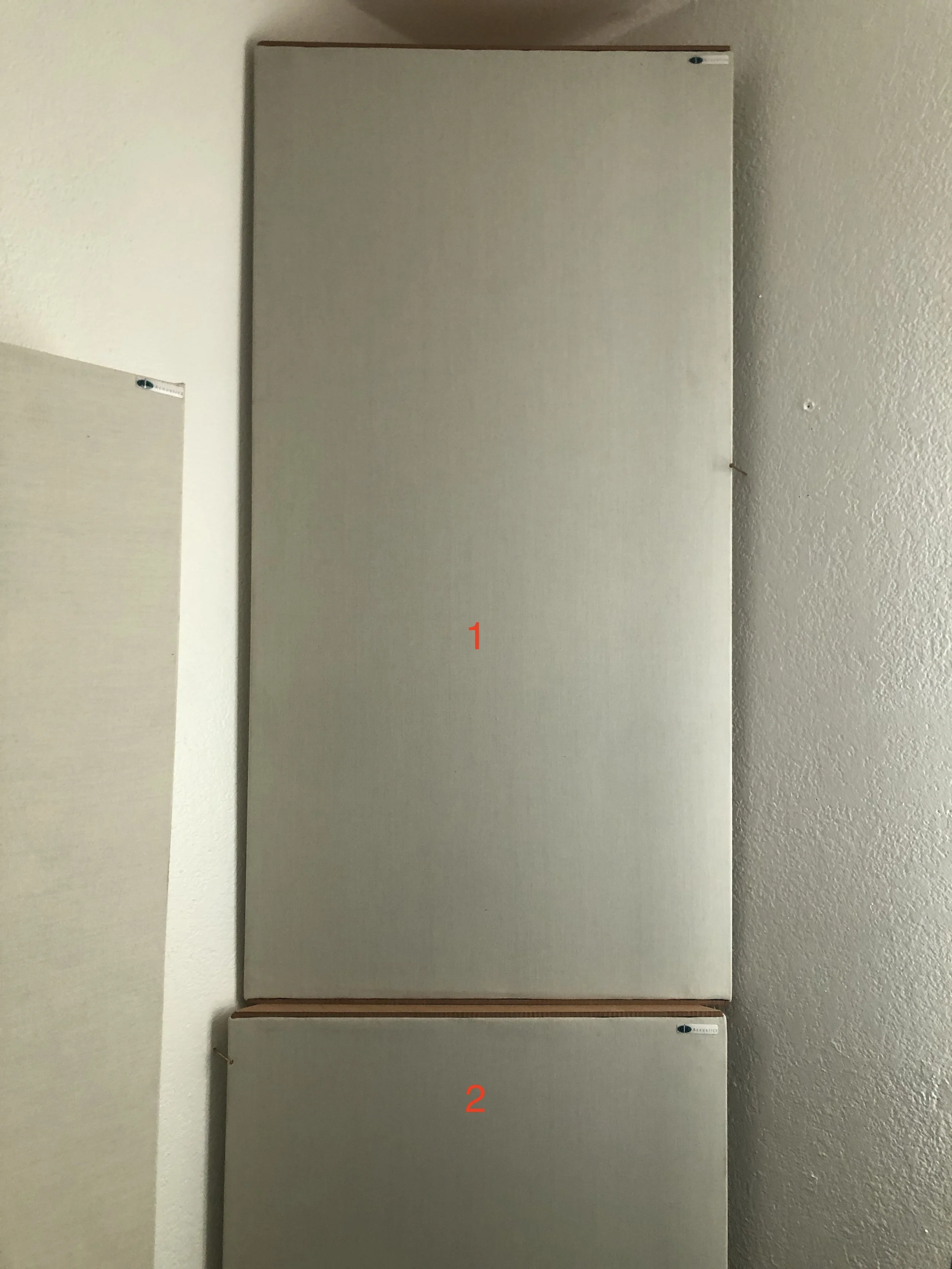Do bass traps need to be floor to ceiling?
In this series, we cover the basics of getting your home music studio set up correctly. Today, we’re answering another very common home studio question: do corner bass traps need to be set up fully floor to ceiling inside a room to be effective?
Acoustic energy in the bass area of the sonic spectrum collects in a room anywhere there’s a corner boundary between two flat surfaces. So, in order to make the most effective bass trap, it’s important to fill that entire corner boundary with as much sound absorbing material as possible. The smaller the volume of sound absorbing material placed in the corner area, the less effective the bass trap will be at absorbing low frequency sound.
Let’s dig deeper.
What are bass traps?
Here’s a quick refresher on what bass traps are, how they work, and why they’re important when it comes to designing a room for making music.
How can bass traps be set up inside a small room?
Here’s a top down, 2-D diagram of my recommended acoustic design for any smaller space: the live-end, dead-end design.
Now, here’s a focused shot of the bass trap component of that design in one of the front corners, in 3-D space. We’ve got two corner bass traps set up here, one stacked on top of each other:
Two corner bass traps, stacked vertically
Having just one of these bass traps placed in that corner instead of both would def be better than doing nothing at all, but maybe not by very much.
Remember, low frequency acoustic energy collects anywhere there’s a corner boundary in a room. So, for the most effective bass trapping, we need to fill as much of that corner area in with thickly laid sound absorption as possible. Leaving half of that area totally devoid of bass trapping will noticeably reduce the effectiveness of your low frequency acoustic control, in this case.
How to make the most cost-effective bass traps
It’s the same basic reason why a simple acoustic panel placed over the corner won’t do it, when it comes to bass trapping. Here’s a more in-depth explanation as to why that won’t work.
This is also why these corner bass traps that are built like a triangular prism, to fill in the whole corner of a room, do such a good job relative to the amount of physical space they take up. This design places a large amount of acoustic absorption, right in the place where it will be the most effective.
There are different styles of bass trap designs, and the style we’re advocating using in this article is called a resistive bass trap. This bass trap design is best for most DIY situations: it’s acoustically effective, affordable, relatively simple to make, and works in all kinds of rooms with minimal fuss.
A different type of bass trap design is called a resonant bass trap. You’ll often see expensive professional acoustics design companies advertising these types of traps, because they can be effective while also taking up less floor space inside your room. A resonant bass trap design might not need to fill the entire corner boundary, floor to ceiling. That’s where some of the confusion around this issue comes from: conflating resistive vs. resonant bass trap designs, and assuming they’re the same thing.
I don’t recommend attempting resonant bass trap installation in a DIY studio situation. That’s because resonant bass traps tend to be much more finicky to design, install, and manufacture. They need to be custom built to match the resonant frequencies of just one specific room, and that makes them much more expensive to make and also less flexible to use. If you move studios, there’s no guarantee that your custom-made resonant bass traps will work as well installed inside of a different acoustic space then they were originally designed for.
A resonant bass trap is more of a custom, bespoke solution, one that might make sense if you were doing a large commercial studio buildout with a licensed acoustician designing all of your rooms. In many DIY-type studio situations, going to that level of expense isn’t really practical or necessary. A resistive style bass trap is a much more affordable solution that is just as acoustically effective, and the only real trade-off is that they take up a bit more floor space.
In terms of cost-effectiveness, the resistive corner bass trap design is great bang for your buck. You can build your own bass traps to fit in this area yourself, or companies like GIK Acoustics sell products that fit in this area perfectly, and are reasonably affordable.
Hint: there is also a corner boundary in the ceiling soffit area, where the ceiling meets the wall. If you end up needing even more bass trapping after your vertical corners are filled in, you could place additional bass traps in this area, and they’d be effective.
The source material for this article is F. Alton Everest’s Master Handbook of Acoustics, which is a fantastic resource for learning more about the science of acoustics.


